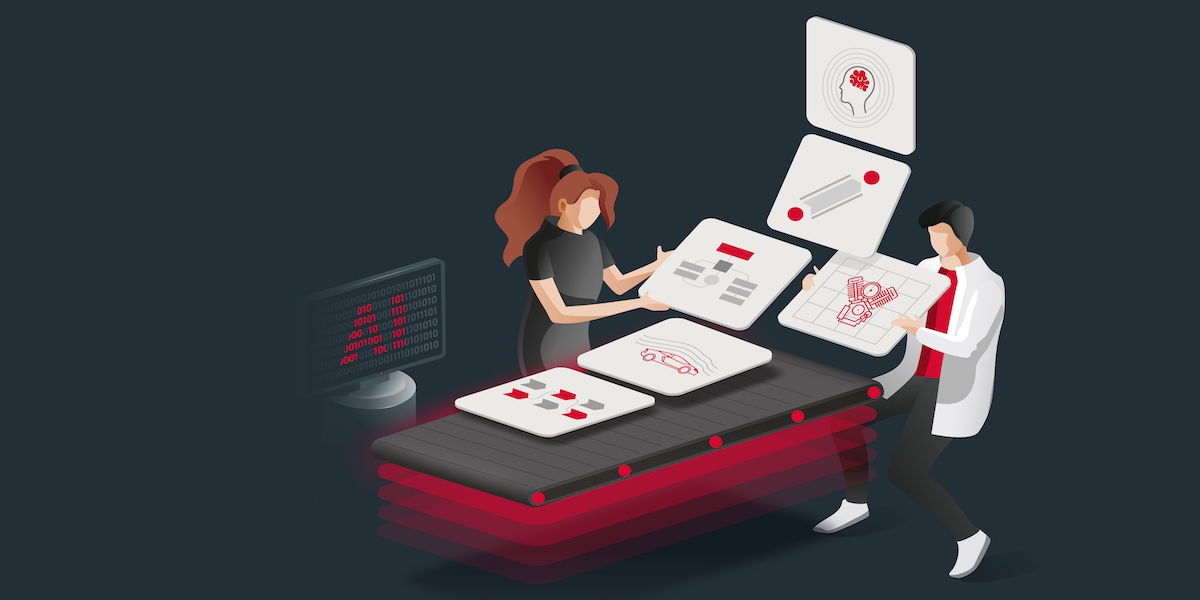How Open Source Makes Cities Sustainable, Smart, Resilient and Inclusive
FIWARE Foundation is a Business Reporter client.
Members of the FIWARE community lay out what IoT platforms, artificial intelligence and distributed ledger technologies have in common, and their potential for making cities more efficient, cost-effective, sustainable and resilient to environmental challenges.
Even though Covid-19 vaccination plans are currently in place across the world (some regions are meeting their vaccination targets faster than others), the impacts of the pandemic are set to stay for years to come, across all sectors of the global economy.
Whether adjusting to working from home, online shopping, home schooling or staycations, the way we live, work and socialize has drastically changed. Almost everything is just one click away before it gets shipped right to our doorstep. We are also witnessing what digital public service delivery looks like.
At the forefront of this new world stands technology, which has undoubtedly been impacted by current circumstances. When it comes to cities, technology alone, however, can be seen in the very same way that most of us feel lately: isolated.
Cities represent distinctive ecosystems of collaborative frameworks such as private and public businesses, not-for-profit organizations, social enterprises and citizens. When done right and aided by emerging technologies, these ecosystems facilitate the transformation of cities into enablers of economic growth, innovation and well-being.
Enabling next-gen technologies to create smart, scalable and secure digital solutions
The global Industrial IoT (IIoT) platform market size is projected to reach $329.8 million by 2026, and at a CAGR of 13.0% from 2021 to 2026. Millions of smart devices across the globe are generating data at an ever-increasing volume, variety and velocity.
The challenge is to have a robust platform to process, analyze and use this data, and to convert it into smart solutions, thereby delivering unmatched service experiences, positive business outcomes and quick returns on investments.
Many organizations embark on developing and deploying their own IoT platform, and often run into unexpected challenges. Urban planning isn’t a straightforward process. Complex research needs to be carried out, too many boxes may need to be checked and countless bureaucracy hurdles tend to block the road towards effective problem-solving scenarios.
In short, the process is time-consuming. As cities worldwide currently face budget constraints, while also having to respond quickly to the global pandemic, investing in critical infrastructure such as IoT platforms demands careful consideration and flexible partners.
Fruitful collaborations are delivering results
To tackle these problems, Nivid Technologies—a FIWARE Foundation gold member—has joined forces with FIWARE to deliver high-performing solutions to collecting and managing data from the most diverse sources. Nivid’s complete suite of IoT solutions and out-of-the-box services address a critical gap in the marketplace and strive to make IoT adoption easier.
Nivid Technologies’ flagship solution, N-Smart, provides a modular, flexible and scalable platform, providing a single-pane view for an end-to-end IoT solution. It turns data from a wide variety of sources into useful, contextual information for people to act upon quickly and effectively.
N-Smart comes with operational dashboards and capabilities such as complex event processing. The platform supports both Big Data and AI algorithms, while offering different APIs for third-party integration and advanced data-driven maps._-_1200x600.jpg)
Open standards, transparency and scalability are key to building smart-city solutions. FIWARE’s open-source platform components breathe reliability and, when combined with N-Smart, result in a wide scope for the development of smart solutions.
Real-time and reliable data offered by the FIWARE platform has helped create applications in a fast and easy manner, not to mention its easy replicability across different locations and sectors of the economy.
Nivid’s horizontal solution caters to various business domains including city and government, utilities and infrastructure, health care, retail, manufacturing, transportation and logistics, as well as agriculture. To learn more about the solution, visit www.nsmart.io.
AI Marketplace: the digital platform for tomorrow’s innovations
Artificial intelligence (AI) is an important key to innovative and efficient product creation. From automating technology scouting to optimizing design data, to incorporating energy efficiency in the design process, the potential of artificial intelligence in product creation is manifold.
Users such as companies or public administrations often lack sufficient expertise to unlock this potential. Providers of AI applications, on the other hand, do not have access to domain knowledge to develop solutions for concrete problems currently faced by companies.
An ecosystem for AI product creation
The AI Marketplace is a joint initiative driven by several partners from the IT and manufacturing industries as well as the research community. Both FIWARE and it’s OWL Cluster Management are part of the consortium—alongside dozens of other partners—that is creating an ecosystem that is unique in Germany and builds a bridge between AI providers and users.

At the forefront of the project is the AI Marketplace platform, where providers, users and experts can develop and exchange AI solutions. The vision is a marketplace that intelligently links platform users according to their supply-and-demand profile, while providing a protected space for secure data exchange and data sovereignty.
Additionally, an app store for AI applications will be created for companies to use directly, along with a toolkit allowing individual AI components to be configured into complete solutions tailored to the needs of individual companies.
FIWARE reference architecture as a building block
The development of the platform architecture is largely driven by FIWARE. It allows the necessary standards to be set for the AI Marketplace platform and advises on the selection of technologies, reference architectures and standardized APIs.
FIWARE aids in the implementation of the developed concepts and their evaluation, and contributes wide expertise in building a marketplace for digital services that deploys FIWARE components and TM Forum APIs.The success of the project is thanks to the combined expertise of 19 research institutions, networks and companies, under the leadership of the Heinz Nixdorf Institute. The AI Marketplace emerged from the Leading-Edge Cluster’s it’s OWL (Intelligent Technical Systems OstWestfalenLippe), one of the largest German initiatives for Industry 4.0 in medium-sized companies.
Two hundred companies and research institutions in the Leading-Edge Cluster it’s OWL are already jointly developing new technologies for the production of tomorrow. The AI Marketplace is heavily contributing to ensuring the competitiveness and sustainability of the industry, and significantly increasing the global visibility of Germany in the field of artificial intelligence.
It’s time to ditch the hype and start acting
What do we really want out of blockchain and distributed technologies (DLTs) in the public sector? If you work in the emerging-technologies scene, you may be familiar with blockchain and its often overenthusiastic promise to transform currencies, governments and businesses.
Much of this perception can be seen across the private and public sectors, which have brought in a wave of experiments with distributed ledger technology. Whereas some of these initiatives found room for success, others failed even before reaching the implementation phase.
Although the hype surrounding blockchain has decreased in recent years, and in spite of the fact that the foreseen benefits of blockchain and DLTs for government—trust, transparency, privacy and efficiency might be seen as somewhat uncertain, we’ve reached reality-check time.

As the coronavirus crisis has substantially sped up the digital transformation of public service delivery and public use of data, governments must get the hang of what has—and has not—worked out if it is to fully serve its citizens.
The time could not have been better fitted to focus on why DLTs may be the answer to better public governance, and what it is that we actually can and want to achieve with DLTs in the public sector. Moreover, how can DLTs be designed to meet the needs of our societies, and what would this require in concrete terms?
Such reflections have been a core part of the TOKEN project, funded by the European Union’s Horizon 2020 research and innovation program. The project has been tackling these very same questions in the context of pioneer cases within four European cities.
Additionally, TOKEN has a dedicated Policy Observatory to discuss and explore the use of DLTs within government. Improved public-sector capabilities stand at the core of TOKEN’s Policy Observatory vision so that services and approaches to societal challenges can come to life.
A holistic approach is needed
However, questions about the DLTs’ role and efficacy remain. TOKEN’s first briefing paper is a tentative and exploratory reflection on the transformative role of DLTs in the public sector. It aims to help policy makers and civil servants worldwide understand the possibilities of DLTs in transforming public services, while also identifying changes required in the sector for meaningful DLT application.
The paper emphasizes the need to move from pure privacy-by-design solutions to a more comprehensive approach of data empowerment; to focus on clarifying the purposes of the public sector; and to build accountability on top of the transparency offered by DLTs.
Such changes will not be triggered without a comprehensive understanding of technology—a holistic approach within the public sector so that it systematically develops not only appropriate technology, but also new structures and processes, relevant skills and capabilities and a supportive culture and mindset to drive such transformation.
To fully benefit from DLTs, the public sector needs to be open to experimenting with real use-cases, but also to dedicating time and resources, and to be aware of environments and spaces that help them fully address such questions.
The TOKEN Policy Observatory is one of these spaces. If you want to know more about the overall TOKEN project, visit the website.
This article originally appeared on Business Reporter. Image credits: Header Image - iStock – id 1064885660;
Body Image 1 - N-Smart IoT Device Management. Image provided courtesy of Nivid Technologies; Body Image 2 - Image provided courtesy of AI Marketplace; Body Image 3 - Image: kid-circus-HyVXOAxah10-unsplash; Body Image 4 - Image provided courtesy of the TOKEN project
